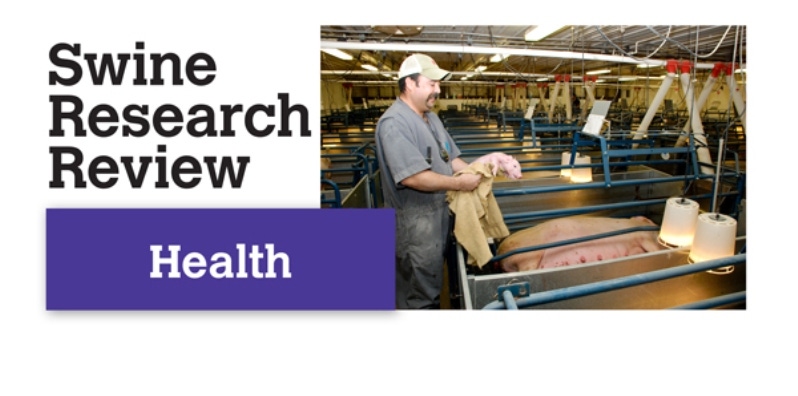Research on dominant types of rotavirus affecting swine farms in Ohio reveals that group C rotaviruses are now detected more frequently than are group A, according to the Food Animal Health Research Program, Ohio Agricultural Research and Development Center (OARDC).
December 15, 2012

Research on dominant types of rotavirus affecting swine farms in Ohio reveals that group C rotaviruses are now detected more frequently than are group A, according to the Food Animal Health Research Program, Ohio Agricultural Research and Development Center (OARDC).
For years, the dominant group has been group A. Most current vaccines target group A and not group C rotaviruses.
Rotavirus infections are a major cause of viral diarrheas in young animals worldwide. In swine, they affect nursing and weaned piglets. Laboratory tests are necessary for reliable rotavirus surveillance.
Still, limited information is available about the prevalence and diversity of swine rotaviruses in the United States, which is critical for vaccine development and optimization.
OARDC scientists studied the prevalence and diversity of groups A, B and C rotaviruses historically (2004) and recently (2011-2012) with fecal samples from mainly nursing piglets in Ohio.
A total of 380 fecal samples were collected from 333 nursing piglets and 47 weaned piglets from seven swine farms for detection of rotavirus. Reverse transcription-polymerase chain reaction (RT-PCR) and partial sequencing were used for detection and genotyping of groups A, B and C rotaviruses.
Rotaviruses were identified in 29% (110/380) of the samples with 9%, 3% and 20% positive for groups A, B and C types, respectively. The positive samples included 3% mixed rotavirus infections, with group C rotavirus mixed infections more common than the other two groups.
Annual prevalence of rotavirus increased from 18% in 2004 to 34% in 2012. The largest increase was observed for group C, followed by group A. Group C rotavirus was dominant in all of the years examined.
The prevalence of rotavirus types varied among the farms and between different years within the same farm. Groups A and C rotaviruses were dominant in most farms, led by group C.
Without using available vaccines for group A rotavirus, it was concluded that differences in management may have influenced prevalence of the disease.
Researchers also studied the relationship between rotavirus detection and diarrhea in 128 samples collected in 2012. Rotavirus was detected in about three times as many piglets with diarrhea (51%) than in non-diarrheic piglets (16%).
Group C rotavirus was detected more frequently in diarrheic piglets than group A and B rotaviruses. However, in non-diarrheic piglets, group A (10%) was more frequently detected than group C (7%), while group B was not detected in any of the non-diarrheic piglets.
These findings suggest that the effectiveness of rotavirus vaccines may be impacted by the dominant rotavirus types (A, B or C) circulating in swine.
New vaccines need to reflect the growing dominance of group C rotavirus and new circulating strains of group A rotavirus not represented in current vaccines.
Researchers: Linda Saif, Anastasia Vlasova and Joshua Amimo, Ohio Agricultural Research and Development Center, Wooster, OH. For more information, contact Saif by phone (330) 263-3744, fax (330) 263-3677 or e-mail [email protected].
You May Also Like



